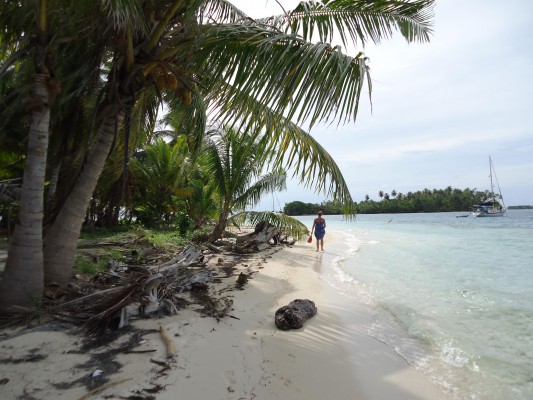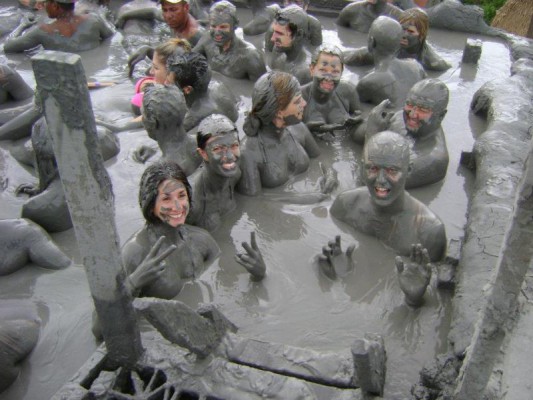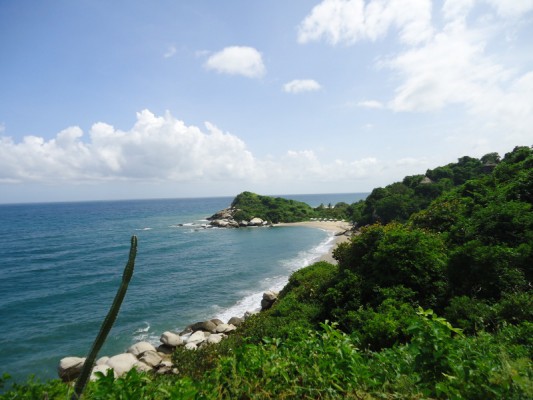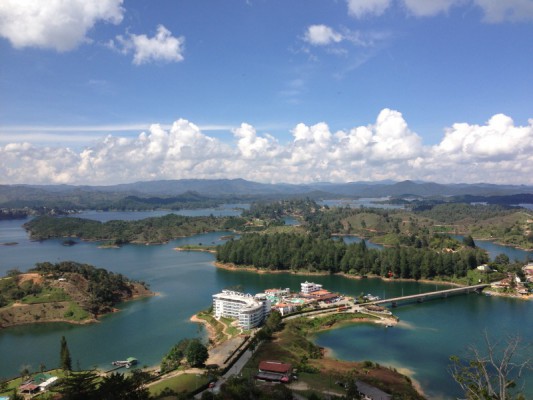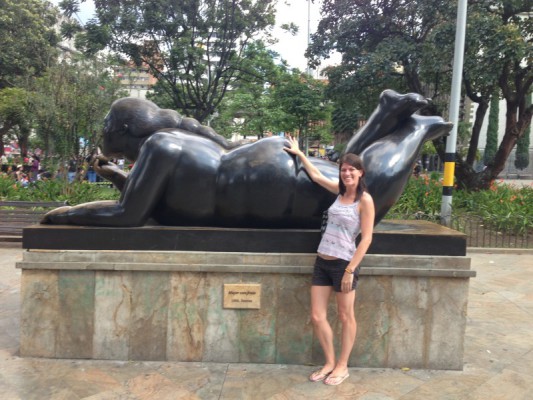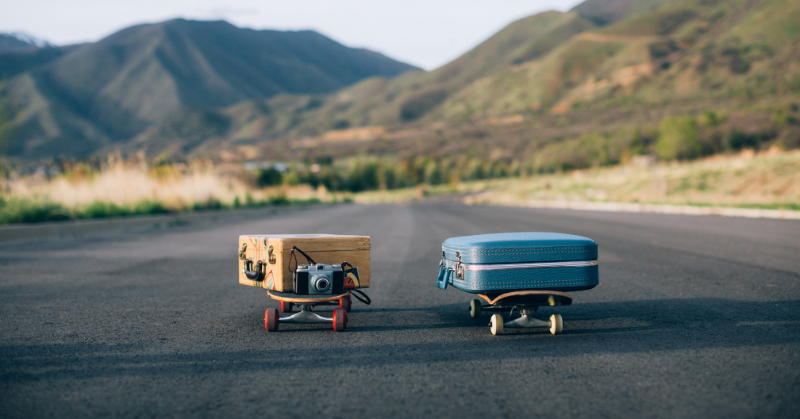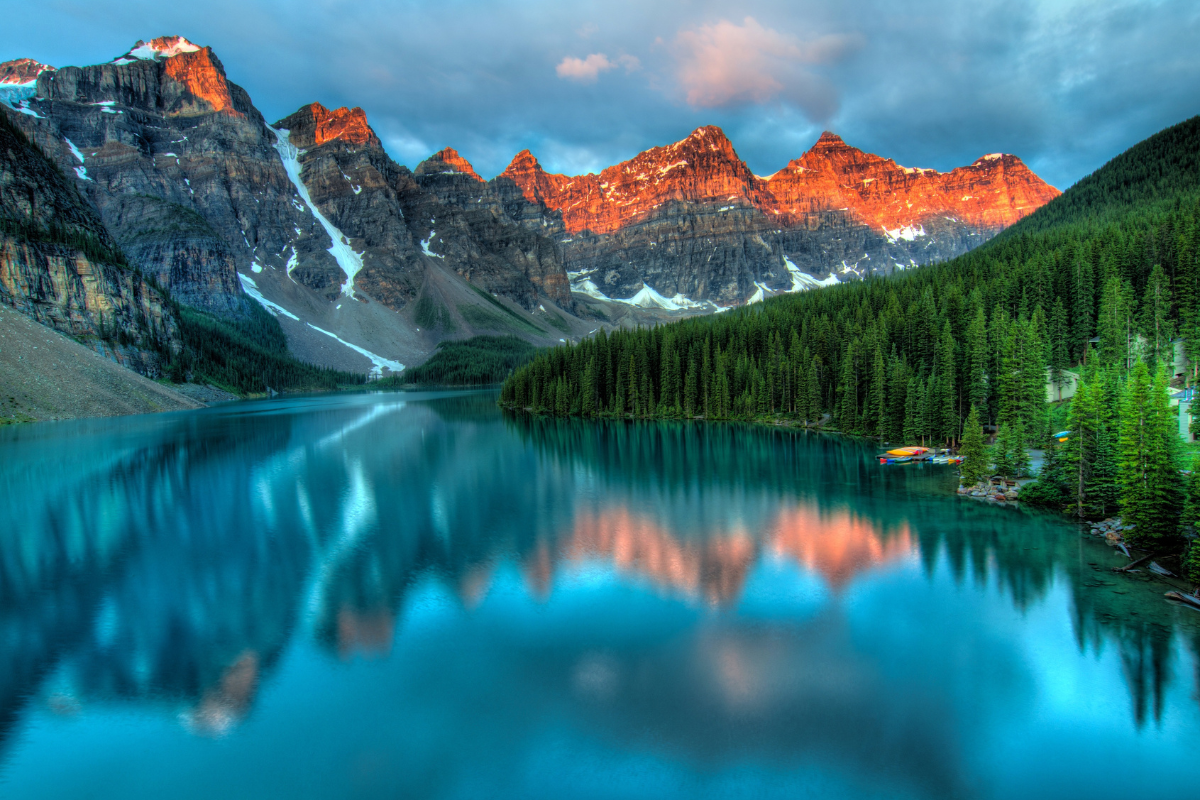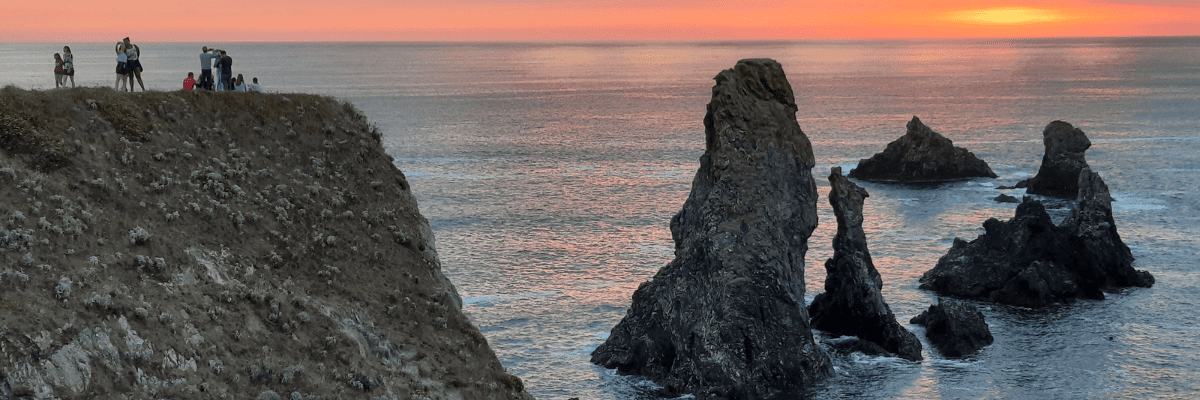When talking with other travellers in South America about the best country they have visited, I have found that the answer is almost always Colombia. The recent slogan that has appeared in Colombian tourism advertising, “the only risk is wanting to stay”, couldn’t be more accurate, however the news that it is a favourite with backpackers still comes as a surprise to a lot of people. Even the immigration official I encountered on my most recent entry to the country couldn’t believe it when I told him it was my fourth visit. So why so much love for Colombia? There are many reasons, but I’m going to start with something simple; food.
Arepas
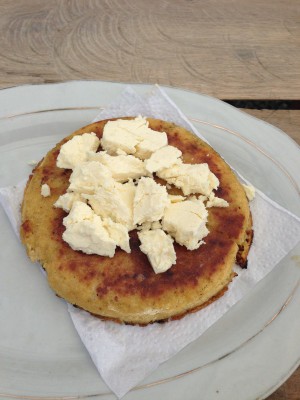
Looking for a quick dinner one night, I ventured out to see what I could find, and it was then that I discovered “arepas con todo”, which translates to “with everything”. I’m not entirely sure what was included in everything, but it tasted amazing. Not just a cart filled with food that was cooked hours earlier, Colombian street food vendors are more like a portable restaurant, complete with gas bottles, cooking plates, utensils, plastic chairs and a drink fridge. After we ordered, we took a seat and our drinks were delivered to the makeshift table (a plastic stool). Our food was cooked while we waited and served with 3 huge bottles of different types of sauces, which we could pour on our arepas in unlimited amounts. I never would have imagined that eating on the side of a hectically busy road could be that much fun, but the whole experience was so worthwhile that we went back the next night.
Diversity
No two trips to Colombia are alike, and every location has something different to offer. My first time here included wandering through colonial streets, exploring a fortress, taking a dip in a mud volcano and sleeping in a hammock at the beach. On my second visit I danced salsa all night and took the cable car to Monserrate for the best views of Bogota. My third trip, I visited one of Pablo Escobar’s houses and enjoyed the excitement of a local football game.
I would love to spend a few days relaxing on the shores of Rio Claro, take the ultimate 6 day trip into the jungle to discover the secrets of Ciudad Perdida (the lost city), head north to San Andres to visit a Caribbean island without leaving Colombia, explore the coffee region, experience the exhilaration of adventure sports in San Gil and witness the stunning rainbow colours of Caño Cristales. Even though Colombia often forms a part of a larger Latin American journey, it could easily be a trip of its own.
Getting there is half the fun!
With flights between Panama and Colombia on the expensive side, a long time favourite of travellers on the journey through Central and South America is to sail between Panama and Cartagena. The trip spends 3 days in the tranquil San Blas islands, then 2 nights sailing on open sea to Cartagena. Consisting of just under 400 islands, of which only 49 are inhabited, and scattered in the Caribbean waters along the Panamanian coast, San Blas is a haven of stunning beauty. In the first 3 days of my sailing trip, we visited 4 different islands. The first day was spent snorkelling and exploring the small island. On the second afternoon we met some Kuna people who lived on a nearby island and were selling handmade bracelets and our dinner – fresh lobster. Our final day in San Blas, we stopped in the middle of 3 islands, all within swimming distance of the boat. That night we left for Colombia, with nothing but ocean surrounding us for the rest of the trip. Arriving in Cartagena was both exciting that a real shower wasn’t far away, and sad that an amazing journey had come to an end.
Panama to Colombia sailing trips are booked through hostels in Panama City, and also in Cartagena if you are doing the trip in reverse. Prices vary slightly depending on which boat you are taking. There is no set schedule, so flexibility is important. You may need to wait a few days until a boat is available. Immigration formalities are taken care of at both ends of the trip, and all meals are included.
Volcan de Lodo El Totumo
When looking through the photo album of every traveller I have met who has been to Colombia, there is one picture that is guaranteed to show up in all of them; that person covered from head to toe in mud. Some suggestions for what I had been doing when I posted mine were “mud wrestling” and “POW camp”. It is actually Volcan de Lodo El Totumo, the one thing that seems to be on everyone’s to-do list while in Cartagena.
A day trip includes entrance the volcano and lunch, and we were told to bring extra money for photos, a massage and having our clothes washed. When we first laid eyes on the volcano, it looked like a giant ant hill made from mud. Not really sure what to expect, we climbed the steps set on the side of the volcano, handed over our cameras and climbed into the crater. The 15m mound is filled with mud, but despite the depth we were surprised to find out we couldn’t sink, and spent the whole time floating around in the top. We were in for a surprise after we climbed out and wandered down to the nearby lake to wash off the mud. I was expecting a quick swim to clean it off, but the ladies who wash your clothes had different ideas; taking off our swimwear to wash it thoroughly and leaving us sitting in the water wearing absolutely nothing. All I can say is that I’m glad it was murky!
Salsa Caleña
Before I arrived in Colombia, I had learnt to dance LA and Cuban style salsa, neither of which helped me when attempting the complicated style that is unique to Cali. Nicknamed “running salsa” by a friend because of the fast footwork involved, everything about this style was new to me; new basic steps, a new count, a new turn structure and most importantly a new way to move your feet. It was a challenging dance to learn, and after a week of classes I only managed to master the basics. I think it would take about a month of daily classes to properly understand the dance, but Cali is one of those places where you can have a blast hanging out for a long period of time.
A typical morning in my week there involved sleeping in, making brunch, then going to a private salsa class with a local instructor. In the afternoons we went around the corner for ice cream or took a Spanish class. Nights started with eating dinner, then piling into taxis to go to that night’s best salsa club, dancing until dawn, and then doing it all over again the next day.
Trekking Tayrona
Situated on Colombia’s Caribbean coast, Parque Nacional Tayrona features a series of stunning beaches set away from the big cities of the country’s north. It is possible to visit Tayrona as a day trip, but given the travel time (1 hour from Santa Marta) and cost of entry (approx US$20) it is better to stay overnight in the park. The bus from Santa Marta drops you off at the entrance to the park, and after paying the entry fee you board another bus to the trailhead. After walking for about an hour across boardwalks, up reasonable size hills (make sure to stop for photos at the highest point overlooking the beach) and through some muddy patches, you will arrive at Arrecifies, the first of two main places offering camping and hammocks. The beach at Arrecifes is not safe for swimming because of strong rips, so most people continue on to El Cabo. The trail to El Cabo follows the water, starting on the beach then moving into the forest covered hills that run along the coast.
For those without tents, El Cabo offers hammocks for approx US$5 per night. There is a restaurant at the campsite, but the prices are on the higher side. It’s a good idea to buy whatever food you can carry and doesn’t need to be stored in a fridge before you leave Santa Marta. Once you make it to your destination, activities in the park include football games, hiking and swimming. The electricity is turned off around 9 pm, which encourages a relaxing, early night, where after checking you hammocks for spiders, you can fall asleep to the sound of the nearby waves in what is essentially paradise.
Defying stereotypes
While it is important to note that there are still some risks involved with travelling in parts of Colombia and caution should be exercised, overall it is one of the countries I have felt safest in. Medellin has a reputation as being a dangerous city from its days of being home to a large scale drug war; however I think it is the most fascinating city in the country. Named as the world’s most innovative city in 2012 in a competition run by The Wall Street Journal, Medellin is going places. While sometimes overlooked as nothing more than Pablo Escobar’s birthplace, it has so much more on offer and truly defies all common stereotypes about Colombia.
I spent 7 days in Medellin in November 2012. Day 1, I caught the Metrocable to visit Parque Arvi. Situated high in the mountains surrounding Medellin, it was easy to forget we were only half an hour from a big city when spending the day in the forest, ziplining over lakes and trying local snacks. Day 2, I did a city tour, including a visit to one of Pablo Escobar’s houses. That evening was the city’s most important football game “El Clasico de la Montaña” played between the two teams from Medellin. Day 3, I attempted to visit Parque de las Aguas, but got lost and ended up shopping and having lunch in a small town about an hour out of Medellin. That night, I got dressed up for my first taste of Medellin’s nightlife in Parque Lleras. Day 4, I visited the Botanic Gardens and Planetarium, and stumbled upon a free outdoor concert next to one of the city’s universities. That night it was back to Parque Lleras to dance salsa, merengue and vallenato. Day 5, I explored the famous sculptures in Plaza Botero and headed to Sabaneta, south of Medellin for dinner. On day 6, I took a day trip to Guatape, about 2 hours by bus from Medellin. Buses leave from the city’s north bus terminal, which is connected to the city’s world class metro system and easy to navigate. I got off to climb El Peñol, the giant rock which towers over the picturesque lake below. Day 7, I took the metro to Estacion Exposiciones, and climbed Cerro Nutibara for stunning evening views of the city. Built on top of the hill is Pueblito Paisa, a replication of a small Antioquian town. For my last night in the city, it was back to Parque Lleras for Mexican food and live music.
South America’s best colonial city
In a continent where there is no shortage of colonial cities, Cartagena is the standout. Complete with forts and a city wall lined with canons for protection from pirates, Cartagena is one of a kind. Inside the city wall, the colourful colonial buildings of Cartagena’s old town feature beauty unmatched by any other city. Castillo de San Felipe is the biggest fortress in Cartagena, the stone structure took over 100 years to build and features a series of tunnels used for bringing supplies in and out of the fort.
The Palacio de la Inquisicion is also worth visiting, home to a museum that features instruments of torture and interrogation methods used to determine witchcraft. Cartagena’s annual festival is in the days leading up to November 11. The city comes to life with concerts, dancing and a beauty pageant. Travellers in the city at this time should be ready to party, and be prepared to be the target of locals spraying shaving foam!
Travel made easy
Need to take a bus? Most cities have one or two major bus terminals serving all destinations. They are easy to navigate, with destinations and prices listed clearly. Services are frequent and buses are of a good quality. Prefer to fly? Colombia’s new lost cost airline, Viva Colombia, offers cheap tickets to destinations all over the country. Other carries; LAN, Copa and Avianca also fly throughout the country and offer reasonable fares. Want to make a phone call? You can’t walk more than a few meters in any of Colombia’s cities without encountering a street vendor selling cell phone minutes. Usually costing between 100 and 200 pesos per minute (approx US$0.10), this is a great way to make local calls without using global roaming or purchasing a sim card.
Need a pharmacy, ATM, coffee, travel agent, groceries or even some new clothes? The Exito supermarket chain offers all of these things and more in the one location, and can be found all over the country. On a budget? Hostels cost around US$10 a night, often with breakfast included. Typical meals, including soup, rice, beans, plantains, salad, chicken or beef and dessert cost US$3-6. Looking for a hostel? Each place I have stayed in Colombia has had a wall of business cards for hostels in other cities, making it easy to find your next place to stay. In Bogota, I stayed at the HI property La Pinta Hostel, which was close to restaurants, shops and the Zona Rosa.
Many thanks Bronwyn for sharing these excellent insights about Colombia! If you would like to find out where Bronwyn is now, check out her travel blog at www.whereisbron.com.
If you’re looking for a great place to stay … check out our hostels in Colombia!
